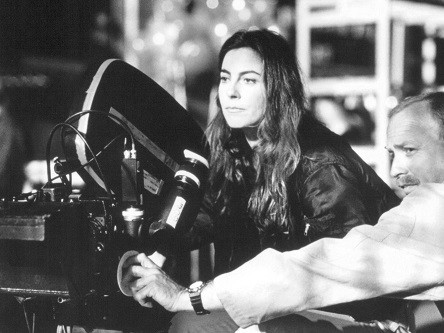
 Women are massively underrepresented in leadership roles in Canadian film and television, says a new report.
Women are massively underrepresented in leadership roles in Canadian film and television, says a new report.
The paper, authored by Dr. Amanda Coles, who holds a PhD in Comparative Public Policy from McMaster University, is called “Who is sitting in the director’s chair? Gender inequality in Canadian screen-based storytelling”. It found that male directors get 84 per cent of the available work, despite the fact there is no economic justification for choosing male directors over their female counterparts.
“Point blank: the number of men sitting in the director’s chair compared to women is alarmingly disproportionate,” says the report. “Without the voice of female creators working in the film, television and digital media sector, we risk women not being represented among Canada’s storytellers.”
Coles says creating a more representative industry might not be easy.
“There is no one basket of solutions that’s going to move this forward and we need foundational change,” she says. “I know that sounds trite, but this is a very complicated, deeply rooted social problem in sexism and racism, and so we need to go at this from a number of levers.”
But one anonymous female director quoted in the report says the challenge has potential to be a rewarding one.
“Genuine voice comes from experience and comes from culture and comes from nature and nurture and there’s no way for it to exist in any genuine way without it being manifested in a very large variety of human beings engaged in the creative process. There is absolutely no argument in favour of only having one kind of person in the director’s chair or one kind of person in the writer’s room. It’s ridiculous and no one makes that argument anymore. It just happens to be the way it is and that’s the problem. We don’t have diversity of voices yet and we certainly don’t have a diversity of voices in the screen industries at any level in any way reflective of the diversity of voice in the viewing public. As long as that dissonance exists we’ve got a huge opportunity ahead of us. It’s a challenge but it’s also a huge opportunity.”
The report says the problem is of particular importance in Canada because film and television production is highly supported by government, whom Coles says should take a leadership role.
“Federal funding and policy bodies can serve as the first bold step towards establishing gender equality as an industry priority,” she says in the report.
The gender imbalance is not unique to Canada. A recent study from Center for the Study of Women in Television and Film at San Diego State University found that women comprised 13 per cent of directors on the top 700 films, but only 7 per cent of on the top 250 films.
The study’s author says the higher the stakes of the game, the less the systems trusts women in power.
“There may be some bias at work,” said Lauzen. “On independently produced films there is the perception of there being lower risk. I think there is a notion that women are not being hired as directors on big films because they are somehow riskier hires. The problem is that’s not how Hollywood works. There’s a growing list of male directors who are relative newbies and are placed at the helm of $100 million-plus films with little feature experience.”
Leave a Reply
You must be logged in to post a comment.




 Share
Share Tweet
Tweet Share
Share




Comment